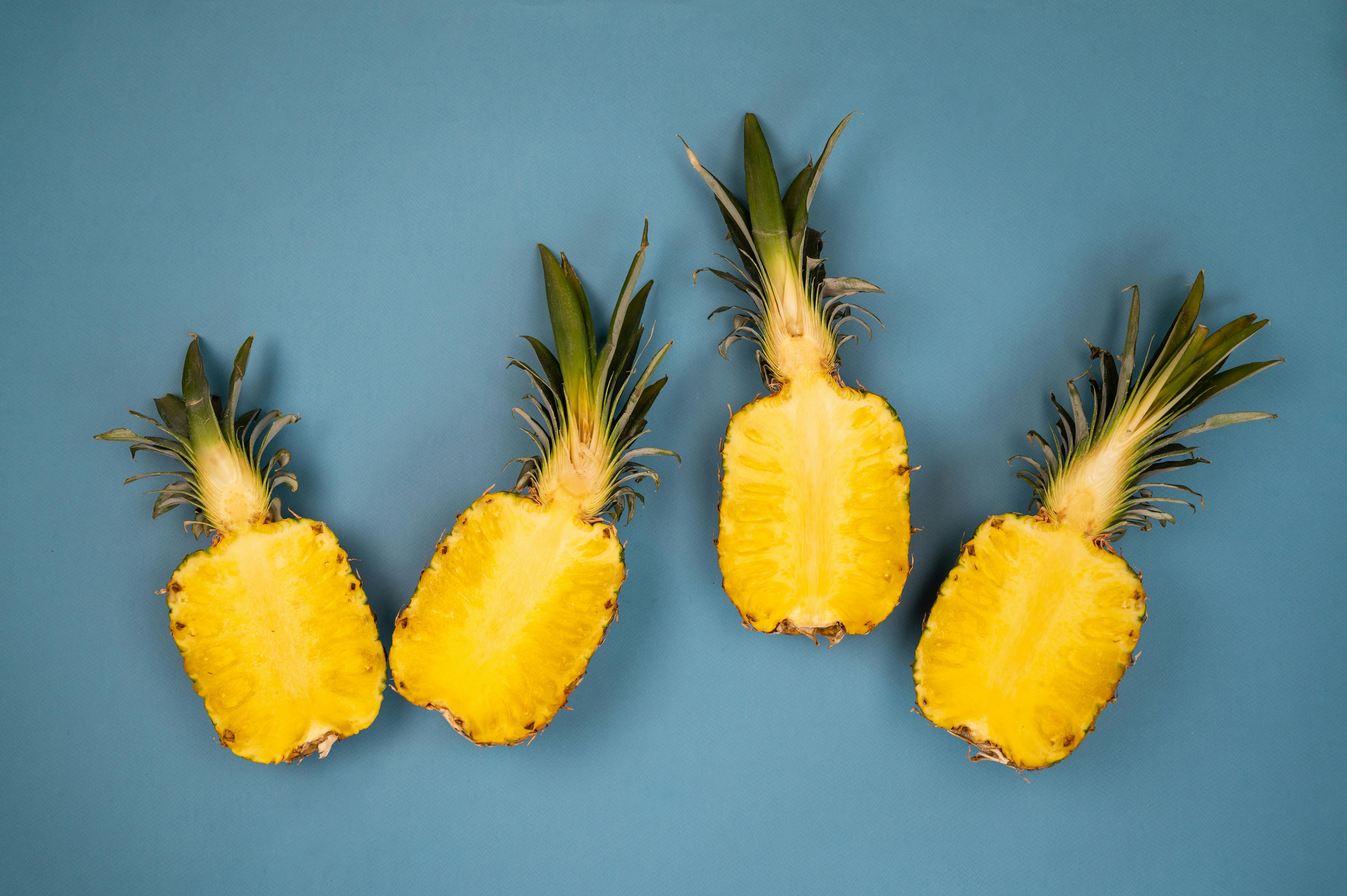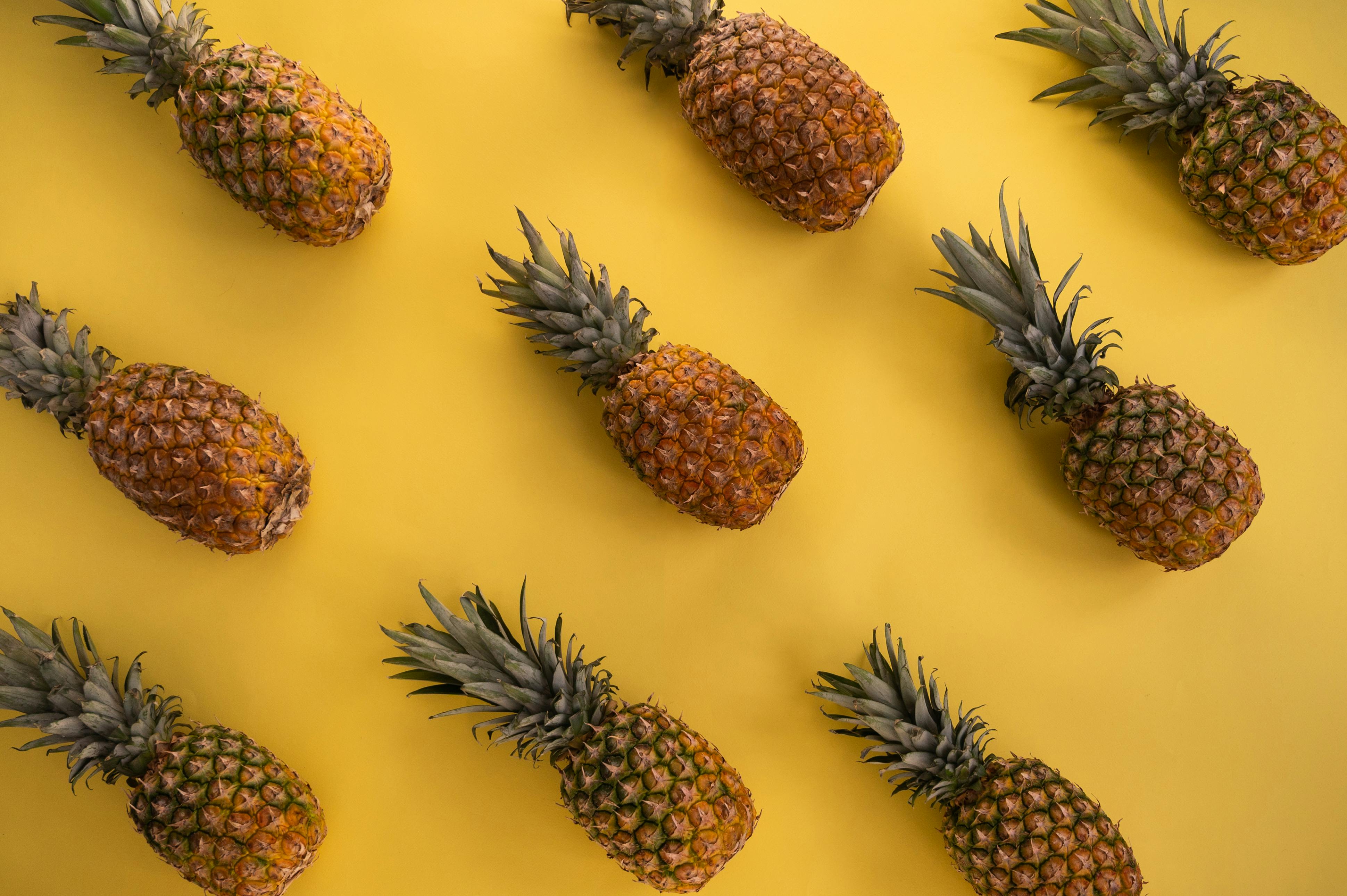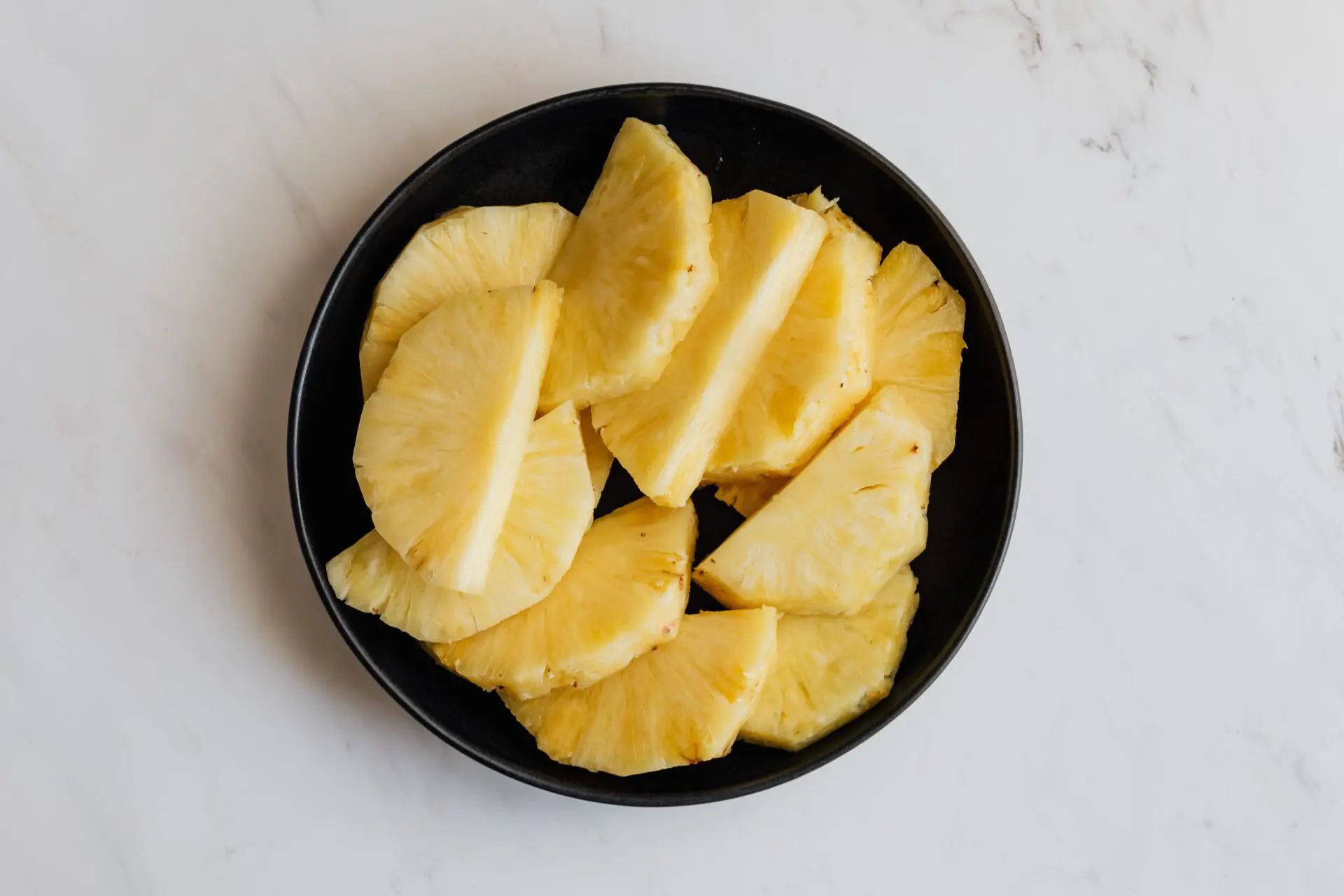Pineapple is a sweet, tropical fruit that is enjoyed all year round. While it’s available in most grocery stores across the United States throughout the year, the peak season for pineapple is actually from March to July. To get the best flavor and texture, it’s important to buy pineapple during its peak season. Here’s what you need to know about when pineapple is in season and how to select the best fruit.Pineapple is typically in season in the United States from March through July.
What is pineapple?
Pineapple is a tropical fruit that is native to South America. It has a sweet and tart flavor and is usually eaten fresh, canned or juiced. Pineapple is high in vitamins and minerals, including vitamin C, manganese, copper, and folate. Pineapple is also known for its anti-inflammatory properties and can help reduce inflammation in the body.
Where is pineapple grown?
Pineapple is grown in tropical and subtropical areas all over the world. The majority of pineapples are grown commercially in countries like Costa Rica, Brazil, Thailand, India, Mexico and the Philippines. Other countries that produce a large amount of pineapple include China, Colombia, Guatemala and the United States.
When is pineapple in season?
The peak season for pineapples varies depending on the region where it’s being grown. In general, pineapples are typically available year-round with peak season between March and July. In North America, pineapple season runs from March to July; while in Latin America it runs from April to August; in Southeast Asia it can last from May to September; and in Australia it runs from October to December.
Weather Conditions
Weather is one of the major factors that affects pineapple season. Ideal temperatures for growing pineapples range from 15-32°C. If temperatures drop below or rise above this range, then the fruit will not grow properly and may become unmarketable. High humidity levels are also important for pineapple growth, as too little humidity can cause the crop to dry out, while too much can cause fungal diseases which can lead to crop loss. Rainfall is also important for pineapple production, as it helps to keep the soil moist and provide nutrients to the plants. Too much or too little rainfall can both be detrimental to pineapple production.
Soil Quality
The quality of the soil is also an important factor in pineapple season. Pineapples need well-draining, nutrient-rich soil in order to grow properly. If the soil is lacking in nutrients or is too sandy or clayey, then this can have a negative effect on crop yields and quality. It is important to test the soil before planting pineapples in order to ensure its suitability for growing this crop.
Pest Control
Pest control is also essential in order to ensure a good harvest during pineapple season. Pests such as aphids, thrips and mites can all damage crops if left unchecked. It is important to monitor crops regularly and take action if any pests are spotted in order to avoid crop loss due to infestation.
Fertilization
Fertilization is another factor which affects pineapple season. Applying fertilizer at regular intervals throughout the growing period helps ensure healthy growth and good yields of fruit when harvest time arrives. Different fertilizers should be used depending on what stage of growth the plants are at – for example, nitrogen-rich fertilizers should be used during early growth stages, while potassium-rich fertilizers should be used during flowering stages in order to promote flower development and fruit set.
Finding Out When Pineapple is in Season
Pineapple is a favorite summer fruit that can be enjoyed in a variety of ways. Knowing when pineapple is in season can help you find the freshest and sweetest fruit to enjoy. There are a few ways to determine when pineapple is in season so that you can enjoy it at its peak.
The best way to find out when pineapple is in season is to check with your local grocery store or farmer’s market. Grocery stores often have information on what fruits and vegetables are currently in season and when they will be available. Farmer’s markets are also a great resource for knowing what fruits and vegetables are currently in season.
Another way to find out when pineapple is in season is to look at the labels on the fruit itself. Pineapples that are labeled as “fresh” or “in-season” indicate that they were picked recently and will be at their peak of ripeness. If the label says something like “imported” or “frozen,” then the pineapple was likely picked some time ago and may not be as sweet or juicy as a fresh one.
Finally, you can also check online for information on when pineapple is in season. Many websites provide information on when various fruits and vegetables are in season, so you can easily see when pineapple will be available near you. This can help you plan ahead so that you can get your hands on some delicious, juicy pineapples during their peak season!
Types of Pineapples and Their Seasons
Pineapples are a tropical fruit that have become immensely popular in recent years. There are many different types of pineapples, each with its own unique flavor and characteristics. Some of the most common types of pineapples are Red Spanish, Smooth Cayenne, and Queen. Each type has its own season when it is in peak ripeness and flavor.
Red Spanish pineapples are the most common type found in grocery stores. They have a sweet flavor with a bit of tartness and juicy flesh. Red Spanish pineapples are usually available from late spring through early fall.
Smooth Cayenne pineapples are longer and more cylindrical than other varieties. They have a sweet-tart flavor, but with less acidity than Red Spanish pineapples. Smooth Cayenne pineapples are usually available from late spring through early fall as well.
Queen pineapples have a slightly acidic taste, but not as much as the Red Spanish variety. They also have softer flesh than other varieties and they tend to be smaller in size. These types of pineapples typically come into season from late summer through early winter.
No matter what type of pineapple you choose to buy, it’s important to look for one that is ripe and ready-to-eat. If you’re unsure whether or not your pineapple is ripe, check for orange coloring on the skin or press your thumb gently into the flesh – if it gives slightly, then it’s ready to eat!

Maximizing Your Pineapple Harvest
Harvesting pineapples can be a rewarding experience, but maximizing your pineapple harvest requires some careful planning. The most important factor for a successful pineapple harvest is to choose the right variety of pineapple for your climate and soil type. Different varieties of pineapple have different growth habits, so it is important to select the right one that will thrive in your particular environment.
Once you’ve chosen the right variety for your climate and soil type, you can start preparing the soil for planting. Make sure to till the soil thoroughly and add plenty of organic matter such as compost or aged manure to ensure that it is well-draining and nutrient-rich. Pineapples require full sun, so make sure that they are planted in an area that receives ample sunlight throughout the day.
When planting, make sure to space out the pineapples adequately so they have plenty of room to grow and mature properly. Pineapples should also be planted deeply in the ground; this helps ensure that they get enough moisture and nutrients as they grow. Watering regularly is also important; make sure to provide sufficient water during dry or hot periods but avoid over-watering as this can lead to root rot or other issues with growth.
Fertilizing regularly is another key component of maximizing your pineapple harvest. Feeding your plants with a high-quality fertilizer designed specifically for pineapples will help ensure that they receive all the necessary nutrients for healthy growth and development.
Finally, harvesting pineapples at just the right time can also help maximize your yield. Most varieties are ready for harvest when they turn yellow-orange or golden brown in color; however, it’s best to check with your local extension office or an experienced grower before harvesting any fruit so you know exactly when it is ready. With these simple tips, you can maximize your pineapple harvest and enjoy a delicious bounty!
Check the Color of the Pineapple
One of the best ways to tell when a pineapple is ripe is to check its color. A ripe pineapple will be yellowish in color, with some green still remaining on the leaves and the base of the fruit. If the pineapple is all green, it is not quite ready yet. It should have some yellowish hue for it to be ready for harvesting.
Feel the Skin
The skin of a ripe pineapple should be slightly soft and give a little when gently pressed. If it feels hard or tough, then it has not yet ripened fully. If you can press your fingernail into the skin without too much effort, then it is probably ripe enough to harvest.
Smell the Pineapple
The scent of a ripe pineapple will be sweet and fragrant. If it smells sour or unripe, then it needs to stay on the plant a little longer before harvesting. You should also avoid picking pineapples with any brown spots as this indicates that they are overripe.
Check for Maturity
Pineapples take around 20 weeks from flowering to maturity so look at how long they have been growing before deciding whether or not they are ready for harvest. If you can see that they have been growing for at least 20 weeks then they should be mature enough to pick.
Harvesting pineapples at the right time is important for getting maximum sweetness and flavor out of them. By following these tips you can ensure that your pineapples are perfectly ripe when you pick them!
Where to buy fresh, ripe pineapples
Pineapples are a sweet and nutritious tropical fruit that can be enjoyed fresh, frozen or canned. When looking for fresh and ripe pineapples, there are several places to look. The best place to find them is at your local grocery store or farmer’s market. Grocery stores tend to have a wide variety of pineapple varieties and sizes, so you can find the perfect pineapple for your needs. Farmer’s markets often have locally grown pineapples that are even fresher than what you would find in the store.
Another option is to buy pineapples directly from a local farm or farmer’s co-op. This way you can be sure that the fruit was grown nearby and is as fresh as possible. It also gives you the opportunity to meet the people who grew your pineapple and learn more about where it came from.
Finally, if you want to buy organic or exotic varieties of pineapple, online retailers are a great option. You can often find rare varieties of pineapple that may not be available in stores or farmers markets near you. Just make sure to read reviews and research the company before making a purchase.

Conclusion
Pineapple is a delightful fruit to enjoy all year round, however, it is at its peak flavor during the summer months. When shopping for pineapple, look for fruit that is fragrant and slightly soft to the touch. Avoid purchasing overly ripe pineapple as this can make it difficult to peel. The best way to tell if a pineapple is sweet and juicy is by tasting it.
Pineapple can be stored outside of the refrigerator for up to three days, however, if you plan on storing it for longer, it should be refrigerated in order to maintain its freshness. You can also freeze pineapple chunks or slices in an airtight container for up to three months.
No matter how you choose to enjoy your pineapple, you’re sure to be delighted by its sweet flavor and succulent texture. Enjoy!



